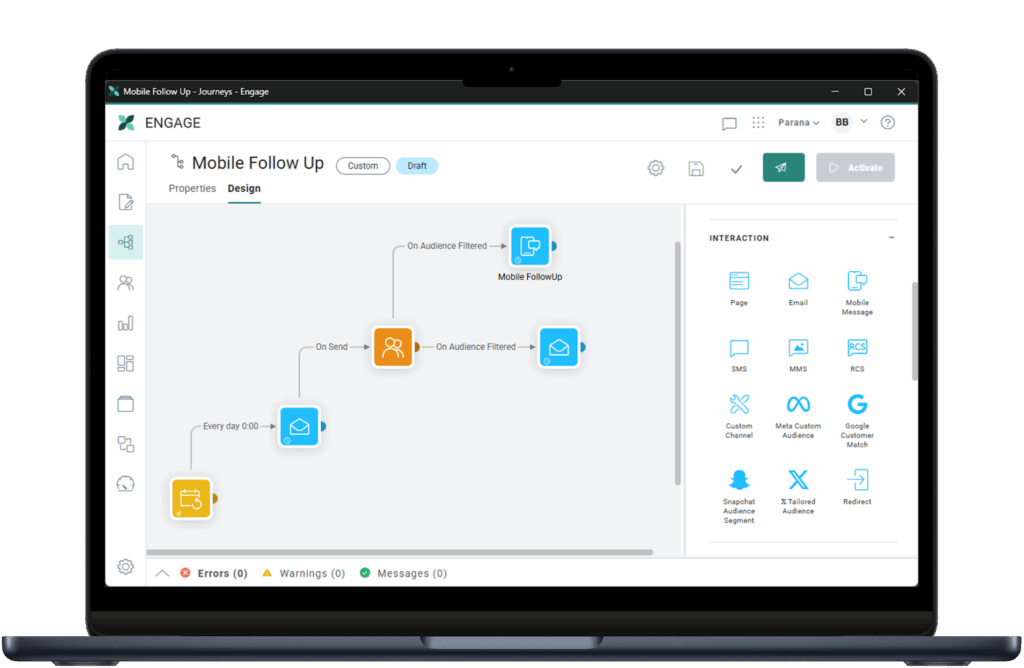Marketing today is complex. Customers expect every interaction to feel personal, but delivering on that expectation, at scale, feels out of reach for many marketers. Data is scattered. Segmentation is shallow. Execution is slow. And with loyalty increasingly volatile, brands cannot afford to waste time or attention.
That is why lifetime value (LTV) has become a critical focus. It is a measure of how much revenue a customer is likely to bring over time, but it also reflects the strength of your customer relationships. Loyal customers do not just spend more; they stay longer and engage more frequently.
This blog post breaks down the most common challenges marketers face when trying to grow customer lifetime value and offers practical ways to overcome them using connected data, personalization, smarter automation, and behavior-driven engagement.
LTV can vary significantly depending on your business model and industry. For example, e-commerce brands might aim for a few hundred euros in LTV, while financial services companies may see values in the thousands of euros.
In practical terms, LTV is driven by three variables:
LTV = (Average Order Value) × (Purchase Frequency) × (Customer Lifespan)
When customer data lives in different platforms and formats, it is difficult to form a complete picture of each individual, let alone take meaningful action.
Where this takes you: A retailer can identify frequent browsers who have not purchased, segment them based on interest, and trigger targeted offers, without needing a manual export or IT support.
How Selligent by Marigold helps: Selligent’s flexible data structure and built-in integrations unify your customer data from all channels. Its zero- and first-party data capture tools, combined with powerful profile management, give marketers a complete, actionable view of every contact.
Generic campaigns and static segments do not build meaningful relationships or long-term value.
Where this takes you: An email that highlights trending shoes for one customer could instead feature back-in-stock skincare for another, each powered by their browsing history and preferences.
How Selligent helps: Selligent lets marketers deliver 1:1 personalization at scale. From product recommendations to send time and subject line optimization, every element adapts to the individual in real time, making every message feel like it was designed just for them.
Lifecycle campaigns tend to follow a fixed sequence. But customer needs, habits, and attention spans are anything but fixed.

Where this takes you: A customer who browses but does not purchase could receive a reminder email the next day, followed by a mobile message with a limited-time offer. Meanwhile, a customer who has not clicked in 90 days enters a re-engagement series and is removed if still inactive, keeping campaigns relevant and respectful.
How Selligent helps: Selligent allows marketers to craft flexible automations that combine behavioral triggers, cross-channel messaging, and cadence control. AI helps you identify audiences where you will get the most impact with your campaigns.
Without clear insight into performance, marketers cannot optimize campaigns or tie engagement to real outcomes like revenue and retention.

Where this takes you: A marketer identifies that flash sales consistently drive second purchases. They use this insight to create a new campaign for customers with only one order on record.
How Selligent helps: Selligent’s reporting tools go beyond opens and clicks. With interactive dashboards, journey analytics, A/B testing, and segmentation from reports, marketers can easily link engagement to value and take immediate action to refine what works.
Growing LTV is about relevance, timing, and trust.
When you deliver experiences that feel personal and valuable, at the moment they matter, customers do not just engage. They come back. And over time, they become the kind of loyal customers who grow your business.
Marigold: where relationships take root.